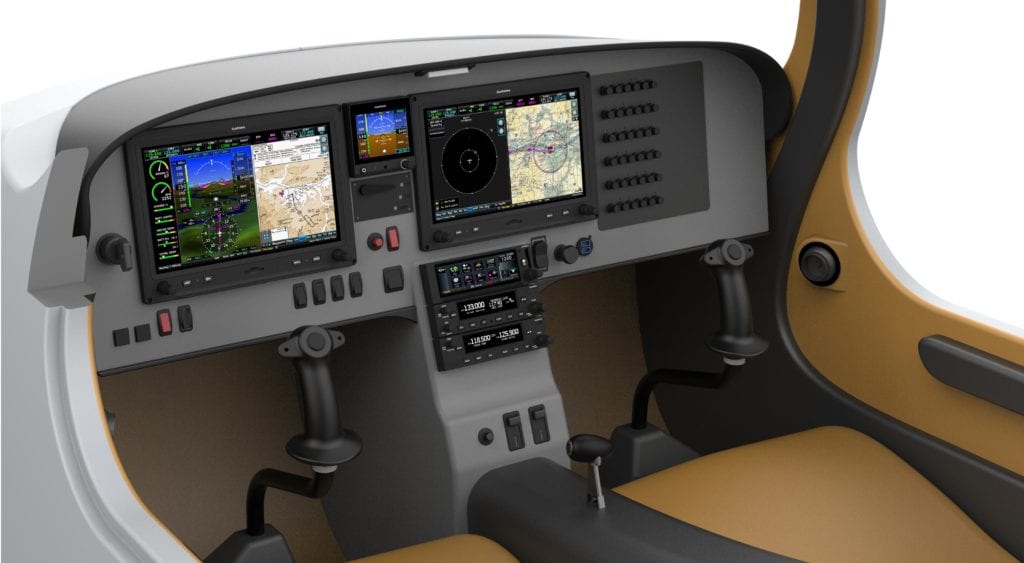
An artist rendering of Bye Aerospace’s eFlyer 2 instrument panel and electric propulsion system displays, provided by Garmin. (Garmin)
Bye Aerospace is working with Garmin to adapt its G3X Touch avionics suite for use with the all-electric eFlyer 2, a two-seat aircraft the company hopes will be the first FAA-certified electric airplane for flight training and general aviation use.
Garmin is supplying full VFR to IFR instrument capability, attitude and heading reference system (ADAHRS), transponders and standby instruments, according to the company, and is working with Bye Aerospace and regulatory officials to adapt displays for use with electric propulsion.
“Garmin is currently working with Bye Aerospace and regulatory officials such as the FAA and EASA to determine how the G3X Touch will display the appropriate information to the pilot,” a representative for the company told Avionics International. “Electrical parameters, power, voltage, prop RPM and more are all examples of what may be included on the G3X Touch display in the eFlyer 2.”
This is Garmin’s first publicly-announced avionics partnership with an electric aircraft. The company declined to disclose any other projects that are in development.
“The G3X Touch has been tailored to the eFlyer 2 to display its electric propulsion information, while also adding safety enhancing synthetic vision, geo-referenced charts, traffic, terrain alerting and more,” said Carl Wolf, Garmin’s vice president of aviation sales and marketing.
Bye Aerospace is pitching its family of eFlyer aircraft — including a four-seat version, the eFlyer 4 — as a cheaper option for training schools to help address to pilot shortage, due to lower operational and fuel costs. Many training schools currently operate aircraft that are nearing the end of their life, which George Bye, founder and CEO, sees as an opportunity.
Bye doesn’t believe the use of electric propulsion aircraft will impact training regimen, as electric motor control “is very similar to turbo-prop and turbo-fan management and is therefore an improvement in learning over the older legacy trainers with internal combustion engines,” he told Avionics.
At the moment, Bye Aerospace’s eFlyer doesn’t achieve weight savings over traditional aircraft, swapping the weight of fuel for batteries. As battery energy densities continue to improve, the company anticipates “electric airplanes, including eFlyer, will continue to improve and equal or even surpass the flight endurance of current aircraft.”